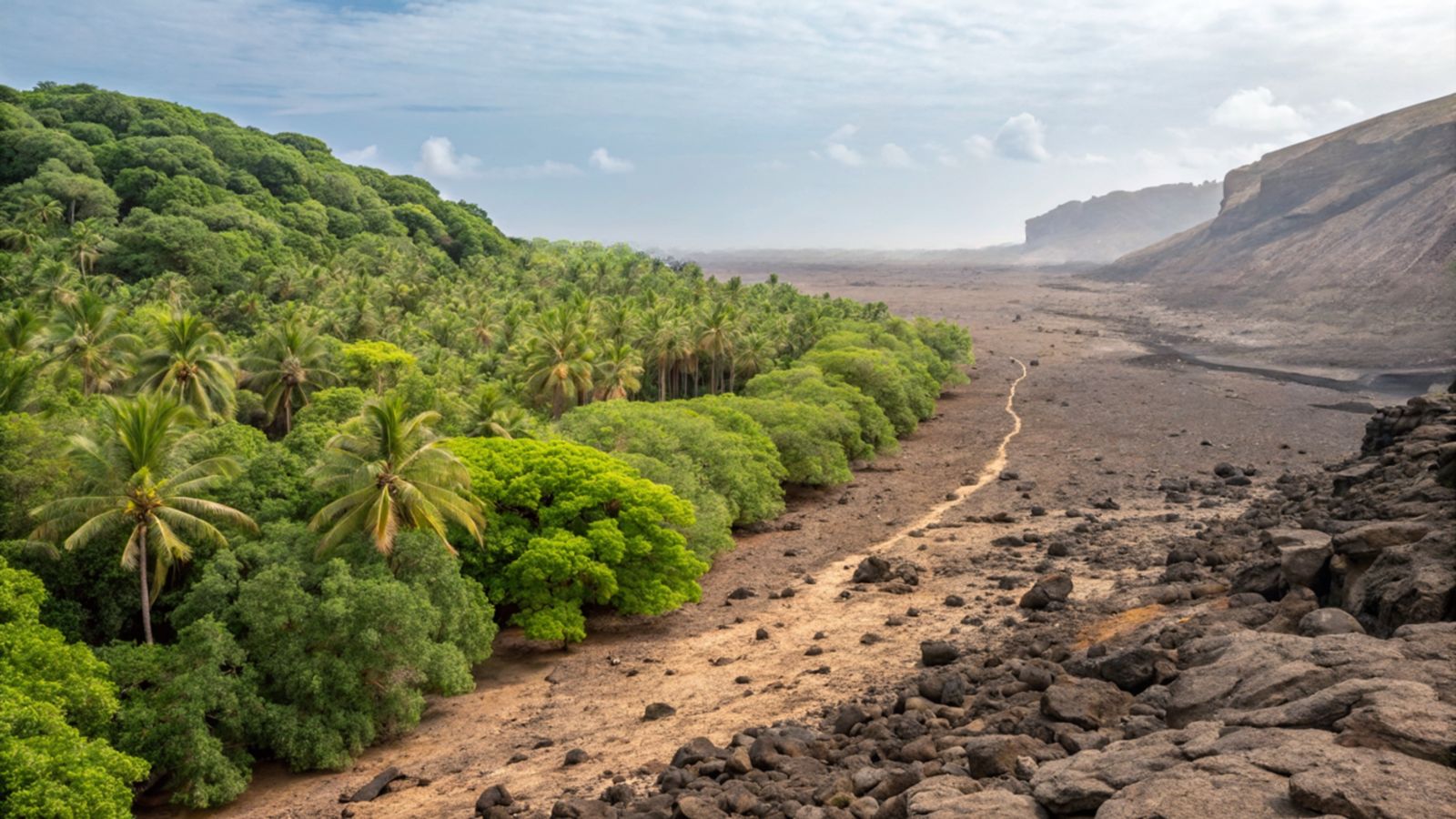Follow us on Google News (click on ☆)

The Empty Quarter (Rub al-Khali), the vast desert of the Arabian Peninsula, was not always an arid expanse. A recent study led by the University of Geneva (UNIGE), King Abdullah University of Science and Technology (KAUST) in Saudi Arabia, Griffith University in Australia, the California Institute of Technology, the University of Texas, and the University of the Fraser Valley in Canada, reveals that it once hosted a large lake and rivers.
These favorable conditions allowed grasslands and savannas to flourish, facilitating human migration until the return of drought, which forced populations to move. This research, published in Communications Earth & Environment, sheds light on the impact of climate cycles on landscapes and human societies.
The Empty Quarter, or Rub al-Khali in Arabic, is one of the largest deserts in the world. Covering nearly 650,000 square kilometers (250,000 square miles), mainly in Saudi Arabia, it dominates the Arabian Peninsula with dunes reaching up to 250 meters (820 feet) in height. This uninterrupted expanse of sand, extremely arid, was not always so inhospitable. This is what the recent study by an international team led by UNIGE reveals.
These water bodies appeared during "Green Arabia," a period of heavy rainfall that lasted from 11,000 to 5,500 years ago.

The brown traces represent the beds of ancient rivers.
© Antoine Delaunay/Guillaume Baby/Abdallah Zaki
"Our work highlights the presence of an ancient lake, which reached its peak around 8,000 years ago, as well as rivers and a large valley formed by water," explains Abdallah Zaki, lead author of the study, former researcher at the Earth and Environmental Sciences Section of UNIGE's Faculty of Science and at the California Institute of Technology, currently a postdoctoral researcher at the Jackson School of Geosciences at the University of Texas.
A lake 42 meters deep
These water bodies appeared during "Green Arabia," a period of heavy rainfall that lasted from 11,000 to 5,500 years ago, at the end of the Quaternary era. "The lake is estimated to have been massive, covering 1,100 km2 (425 square miles)—nearly twice the size of Lake Geneva—and reaching a depth of 42 meters (138 feet).
Due to increased rainfall, it eventually gave way, causing a major flood and carving a 150 km (93-mile) long valley into the desert floor," details Sébastien Castelltort, professor of surface processes at the Earth and Environmental Sciences Section of UNIGE's Faculty of Science, who co-led this work with Abdallah Zaki at UNIGE.
Based on sediments and landforms traced over a distance of 1,000 km (620 miles), scientists estimate that the heavy rains feeding these ancient water bodies originated from the northward expansion of African and Indian monsoons.
These wet phases, linked to orbital cycles, varied in duration by region: several millennia in the south versus a few centuries in the north. They fostered the formation of grasslands and savannas, facilitating human expansion into the Arabian Peninsula.
Human impact
"The formation of lake and river landscapes, along with grasslands and savannas, would have led to the expansion of hunter-gatherer groups and pastoral populations into what is now a dry and barren desert. The presence of abundant archaeological evidence in the Empty Quarter and along its ancient lake and river networks confirms this," says Michael Petraglia, professor at the Australian Research Centre for Human Evolution at Griffith University.
Around 6,000 years ago, this region experienced a sharp decline in rainfall, creating dry and arid conditions that forced these nomadic populations to move to more hospitable environments.
These findings highlight the crucial role played by an African monsoon in rapidly transforming the landscape of the Arabian Peninsula desert, as well as in population movements. This narrative of climate disruptions and human migrations, recorded in rocks and landscapes, is fundamental for understanding and anticipating the possible consequences of current climate change.